With my piano students, I love to introduce classical music as soon as possible. It gives them a head-start in getting used to the contrapuntal reading that classical music requires, as well as the kinds of technical and musical challenges that classical music requires. Early exposure also means that they in most cases they grow to love and appreciate the music!
Anthologies are perfect for students who are just being introduced to classical music. They allow you to expose students a variety of styles and composers at a great value. Even if the student does not study all of the pieces in the anthology, they can use the others for sight-reading practice or play them just-for-fun later in their piano study.
In most cases, I give my students their first classical anthology soon after they complete the Primer and Level 1 of their method book. I have tried out a variety of different anthologies in order to determine which ones work best for students at that early level. It is nice to have a few options to chose from, so that your students are not all playing the same repertoire.
Below is a list of some excellent anthologies I have evaluated for their suitability as an early elementary level student’s first introduction to classical music. I’ve also included comments about each book’s value, length, variety of selections, clarity of the score, quality of the editing, etc. I hope you can find my list and comments useful!
Preparatory Piano Literature, from the Developing Artist Original Keyboard Classics series, ed. by Nancy Faber, Randall Faber, and Jeanne Hansen (Hal Leonard).
Contains 12 selections, and comes with a CD. The scores are clean and clear, and the editing is good. This is an excellent book to use as a student’s first classical anthology. It includes two pieces with teacher duets, which is a nice bonus. My students have enjoyed learning those duets, and I’ve often had older siblings accompany them instead of me.
After completing this books, students can continue to books 1, 2, 3, and 4 — or jump over into the set of Piano Sonatina books, Levels 1, 2, 3, and 4. I love the 20th/21st century selections included in the Piano Literature books (there is not much in the Prep level, but there is more in the upper levels) — in particular, I love Hansi Alt’s “On the Ocean Floor” from Level 1.
Masterwork Classics, Level 1-2, ed. by Jane Magrath (Alfred).
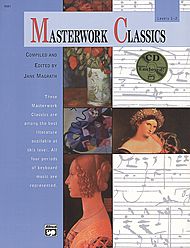
This book contains 27 short pieces, and comes with a CD. The editor is the author of the excellent book, The Pianist’s Guide to Standard Teaching and Performance Literature. The editing is excellent, and I almost never change the fingering. I find the selections in this book to be appealing and appropriate for early elementary students, and I find myself using these books frequently. This series continues all the way to level 10.
This book is perhaps a little bit pricier than others, but has quite a few pieces and comes with an excellent CD.
Journey Through The Classics, Level 1, ed. by Jennifer Linn (Hal Leonard).

This fairly-new release contains 25 selections, presented in progressive order. The front of the book contains a table showing the historical periods each piece is from, as well as a list of the musical challenges the student will encounter in each piece. The selections cover the 17th-21st centuries and include a newly-composed composition by the editor.
The score is clean and clear, and the paper is a nice creamy color (it reminds me of Henle scores!). This book is an excellent value. The pieces are simple enough for an early elementary student’s first introduction to classical music. I have been very impressed with this new release so far, and plan to use it frequently with my students. Levels 1-4 are available.
An Introduction to Classics to Moderns, from the Music for Millions series, ed. by Denes Agay.
This book is a large collection, containing 40 pieces. The music notation is not quite as large or clear as some of the other editions (which is a downside if you are teaching a young student), but it is certainly acceptable. I find the fingering to be pretty good most of the time. The editing is sparse to non-existant — so in many cases, you will need to write the phrasings and articulations in the score for your student.
This book is an oldie, but a goodie! It’s a great value for the price, because it contains so many pieces. It is nice to have such a large selection of pieces for the student to choose from.
Pathways to Artistry — Masterworks, Level 1, ed. by Catherine Rollin (Alfred).
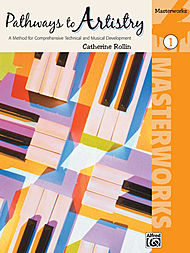
This book contains 21 pieces that are primarily in 5-finger positions. The score is clean and clear, and the editing looks good (although I haven’t tried this book with a student yet). Rollin includes little notes in the score for the student with technique reminders, such as “elastic wrist,” “push off staccato,” and “wrist rotation in slur.” She also includes a few sentences of biographical information about each composer, and indicates which historical period each piece is from.
The Masterworks book is accompanied by Technique and Repertoire books, in order to create a complete method if desired. The Repertoire book provides newly composed music, and the Technique book contains exercises and pieces designed to increase the student’s technique. The Masterworks books are available in Level 1 and 2, and the Technique and Repertoire books are available in Levels 1-3. A CD is also available, which contains the repertoire from all 3 levels of the Masterworks books.
The Festival Collection, Preparatory, ed. by Helen Marlais (FJH).
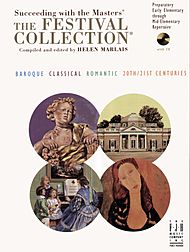
This book contains 20 selections, and includes a CD. The pieces span the 17th to 21st centuries, with the most recent compositions being composed by Timothy Brown, Mary Leaf, and Dianne Rahbee. This book includes pieces that are simple enough to be appropriate for the early elementary student.
The book includes information about the time periods of music history, as well as more specific information about each piece. After completing the preparatory level, students can continue in the series through Levels 1-8. A Teacher’s Guide is available.
Piano Etudes for the Development of Musical Fingers, from the Francis Clark Library, ed. by Frances Clark, Louise Goss, and Sam Holland.

This book contains 29 selections. I have not used this book with a student yet; I found it during my research and plan to try it out soon. Based on the preview pages I viewed, the selections look perfect for a early elementary student. Based on the names of the editors, I have no doubts that the selections were carefully chosen and organized, and that the editing is good.
According to the description, the book contains suggestions for musical, rhythmic, and physical practice. Levels 1-4 are available in this series.
Mastering the Piano, Level 1, ed. by Carole L. Bigler & Valery Lloyd-Watts (Alfred).
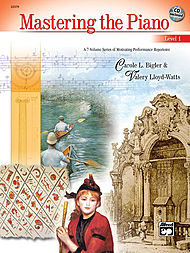
This book contains 13 selections, and includes a CD.
The selections have been carefully and pedagogically chosen by the editors from the repertoire of the great masters from all eras. The pieces are diverse in style and expression, and are motivating and satisfying for the student to learn. The selections are simple enough for the early elementary student.
Levels 1-7 available are available in this series.
Essential Piano Repertoire, Preparatory Level, ed. by Keith Snell (Kjos).

This book contains 9 selections, and includes a CD. The pieces are from only the 17th, 18th, and 19th centuries — there are no 20th or 21st century inclusions. The score is clean and clear, and the editing is good. Most of the selections are simple enough for an early elementary student, although because it is a short book there are not as many pieces to choose from. Levels 1-10 are available after the preparatory level.
These books are not to be confused with the Neil A. Kjos Piano Library series, which is split into three books at each level, starting with a Preparatory level: the Romantic-Twentieth Century book, and the Baroque-Classical book, and Etudes (CD for each level available separately). Because of the way the literature is split historically between books, this approach is more suitable as a complete method series in itself, as it was intended, rather than as a supplement. These three books are available from Levels 1-10 after the Preparatory level.
* * * * *
Did I miss any? In the comments below, tell us about any other anthologies you use with early elementary students, or vote for which one of the above is your favorite!
***Read Part 2, which covers anthologies for late intermediate to early advanced students (and beyond).***



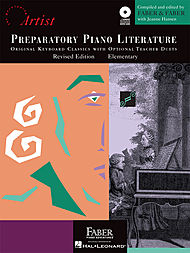

Thanks for posting these, Joy! I learned about some new ones that I will have to check out. 🙂
I’m glad! It was my intention to discover some new books to try, and I’m happy to share my findings. 🙂
I completely agree that early exposure is important. A lot of people underestimate the value of good music – and underestimate the students’ ability to appreciate it.
Good post, Joy.
Thank you, LaDona!
Funnily enough I was just making a list like this on Sunday. I am so happy to see a more expansive list that I was able to come up with. This is awesome.
I had a parent ask me about Suzuki method today as she attended a recital over the weekend where the students played some “very impressive” pieces. She wanted to know what I thought about suzuki specifically and my response was that I preferred a more literacy based approach because I wanted them to have a strong foundation before delving into classical literature. While I took 18 years of private piano lessons, my actual degree was vocal performance/elem education. So I teach piano, voice and preschool music classes, but I don’t know a ton about piano pedagogy. Questions like this parent’s make me nervous since I don’t feel like I really know what I’m talking about.
What is your opinion on the merits of suzuki vs. the traditional method books?
Thanks!!
Suzuki and non-Suzuki approaches are both good approaches. Sometimes, Suzuki gets a bad reputation for producing students who cannot read music — however, when done correctly (with theory classes alongside of the lessons, as the Suzuki approach is supposed to be taught, as I understand), Suzuki students learn how to read just a well as other students — it’s just delayed in favor of developing the ear first.
There are so many theories about the “best” way to teach/learn music. Our job as teachers is to choose what we think is best, and teach it the best way we know how. 🙂 I think your response to that parent was a good one!
Thank you for compiling this list!
I also like to introduce classical music very early. One of my favorite compilations has been Valerie Lloyd-Watts and Carol Bigler’s Everybody’s Perfect Masterpieces. Especially volume one and two. It is difficult to find early elementary music that doesn’t sound early elementary and I think this compilation achieves that. Beautiful music with a pedagogical purpose!
http://www.sheetmusicplus.com/title/Everybody-s-Perfect-Masterpieces-Volume-One/3537321#
That book looks perfect to add to this list! Thanks, Natalie!
Thanks again for an interesting topic Joy.
I like My First Book Of Classical Music by Bergerac. This book has a selection of 29 themes by Beethoven, Mozart, Chopin and More. The other set of books, Level 1 – level 5, that I have used is Classical Themes by Fred Kern, Phillip Keveren and Mona Rejino (Hal Leonard). Whilst Levels 1 & 2 were a bit “ordinary” Levels 3 onwards were greatly enjoyed by my pupils. However, I am having difficulty in obtaining these books now.
Thanks for sharing about that book, Margaret. To me, it looks like it would be bit challenging for an early-/mid- elementary student, but perfect the late elementary or early intermediate student who is interested in playing arrangements of classical themes!
Thank you, Joy! I love this list!! I have wanted to introduce classical music at the earlier stages, but I wasn’t exactly sure hope to accomplish this goal. This gives me a great list of books to begin with! Thank you for sharing.
You’re welcome!
Music Tree Keyboard Lit 3
Francis Clark Contemporary Lit. Bk 1
Exploring Piano Lit. Prep Bk.
Celebration Perspectives Intro. level
I just read this post for the first time. I’m LOVING your blog, Joy! I would second Kathy’s input above on Celebration Series Perspectives. I love this entire collection, from elementary to advanced. They include a great selection 21st century works in each level, which I always try to look for in a repertoire collection.
I would also highly recommend Breitkopf and Hartel’s 70 Keyboard Adventures with the Little Monster Vol. 1 and 2. These are extremely fun pieces that include elements such as speaking, clapping, clusters, and more “exploratory” music making. In addition, the artwork in the books are GORGEOUS (the book is really a piece of art itself). These collections are a bit more expensive, but more than worth the money. I just ordered more books from the same publisher – looking forward to see what those are like.
Thanks for your comment, Jennifer! I like the Celebration Series, but not as the student’s FIRST classical anthology. The selections in the first book are more appropriate for a late elementary level student than an early/mid elementary student. The Celebration Series did make it into the list in the sequel to this blog post, though! https://colorinmypiano.flywheelsites.com/2013/01/14/more-classical-anthologies-for-piano-students/
I have heard good things about the “70 Keyboard Adventures” books you mentioned — thanks for sharing your reasons for liking those volumes. I will definitely have to put those on my next sheet music order!